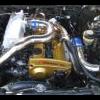Taking The Challenge Of The Greddy Copy Plenum :)
Announcements
-
Similar Content
-
Latest Posts
-
"With a 1.5-WAY, the LSD is effective only during acceleration."
-
By TurboTapin · Posted
Well it wasn't as easy as I thought.... and it also wasn't in my original manual which I did end up finding. They discuss the process in the Nismo catalogue though and it requires slight machining. Page 145. NISMO PARTS CATALOGUE 2020 -
By TurboTapin · Posted
I'm an idiot, my intercooler is rated for 1000hp. I had clicked on the wrong product. Knowing the delta P would be nice, but I'm doubtful I'll do it. Now as for an EMAP, that would be great and I'll get around to it eventually but from my findings in my last post, I'm considering a turbo swap now. -
By TurboTapin · Posted
You sir, big win tonight. Precision never supplied compressor maps in the past and Idk when they started, but it seems they only offer for a few of the older gen2's which is exactly what I have. I punched in some numbers and seem to have gone with the wrong turbo. 600-700whp isn't in the most efficient area and is close to the choke line. 800whp is well off the map. Punching the numbers into a 68mm gen2 turbo map is bang on in the center. Here I was thinking going smaller would shift the power band down, but in reality it would just make it so much worst due to my rev limit. I would have never thought.







Recommended Posts
Create an account or sign in to comment
You need to be a member in order to leave a comment
Create an account
Sign up for a new account in our community. It's easy!
Register a new accountSign in
Already have an account? Sign in here.
Sign In Now